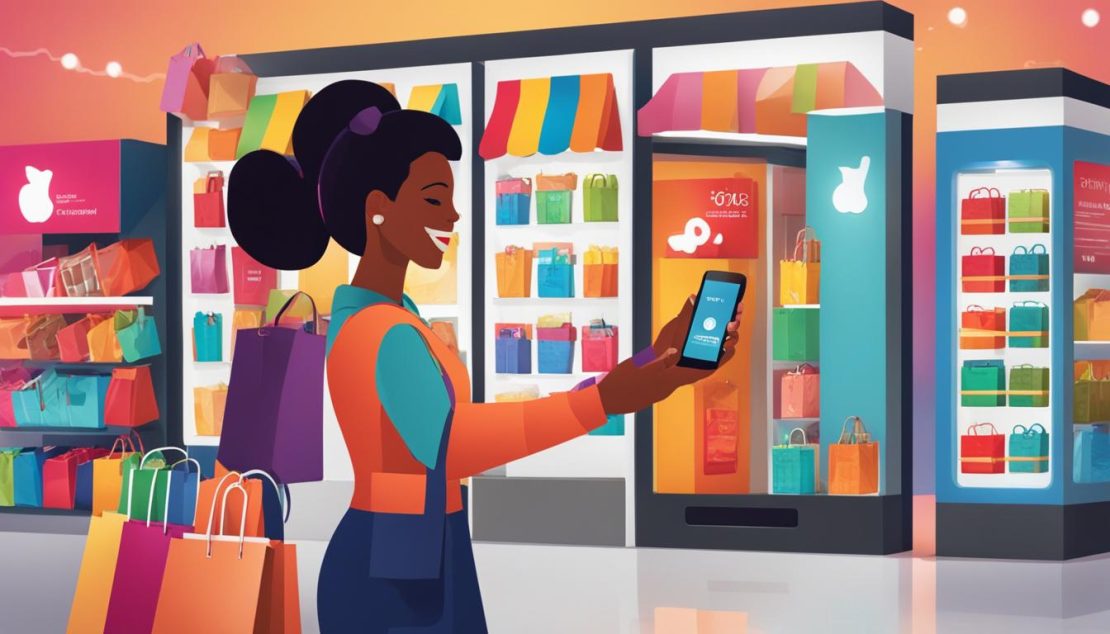At the core of every thriving retail business lies a strategy that’s not just about selling products, but about creating an experience that resonates with consumers. This strategy is known as Shopper Marketing, a dynamic approach designed to empower stakeholders — brands, retailers, and most importantly, consumers. By focusing on the shopper’s path to purchase, this discipline merges in-depth behavioral insights with actionable retail tactics to foster stronger consumer engagement and brand loyalty.
Shopper Marketing is all about the opportune moment — the point at which a consumer is ready to make a decision. It’s a pivotal retail strategy shaped around the point of purchase, wherein each product’s placement, promotion, and price can significantly influence the decision-making process. In an era where choice is abundant, understanding and satisfying the needs of shoppers is key to converting interest into sales, thereby driving business growth and customer loyalty.
The Evolution and Definition of Shopper Marketing
Observing the evolution of shopper behavior and marketing trends reveals a remarkable transformation driven by technology and changing consumer expectations. In-store marketing, once the mainstay for capturing shopper attention, now merges seamlessly with digital engagement tactics, creating a multi-dimensional arena where brands connect with consumers.

At the intersection of this evolution is a dynamic form of shopper marketing that prizes insight over mere exposure. Marketers have shifted their focus to a more nuanced understanding of the shopper’s journey, recognizing that tailored interactions at critical decision points can significantly influence purchasing decisions.
Today’s shopper marketing is defined by the strategic alignment of marketing efforts with detailed shopper insights to foster brand growth and strengthen consumer relationships at every touchpoint.
The transformation of shopper marketing is not just theoretical; it is embedded in the retail landscapes we navigate daily. Below is an overview of the different arenas where shopper marketing actively shapes consumer experiences:
| Engagement Channel | Marketing Strategies Employed | Impact on Shopper Behavior |
|---|---|---|
| Physical Stores | Personalized in-store promotions, shelf-edge marketing, experiential events | Enhances the sensory experience, increasing perceived value and impulse purchases |
| Online Platforms | Targeted ads, e-commerce optimization, mobile apps | Facilitates convenience, comparison shopping, and increases time spent on brand interactions |
| Mobile Engagement | Location-based marketing, push notifications, augmented reality | Fosters immediacy, personal relevance, and engages shoppers on-the-go |
This complex tapestry of shopper marketing represents a significant leap from traditional advertising’s one-size-fits-all approach. By understanding the roles of different platforms in shaping shopper behavior, brands can create a synchronized strategy that resonates with consumers, ultimately guiding them towards a desired action.
As we continue to navigate these exciting shifts in shopper marketing, the key takeaway for brands is clear: those who adapt and innovate to meet the evolving demands of digital engagement and in-store marketing will shape the future of consumer shopping experience.
Key Components of Shopper Marketing
In the ever-evolving landscape of retail, shopper marketing has become an indispensable tool for brands looking to connect with their customers meaningfully. To effectively leverage shopper marketing strategies, several key components must be interwoven into a comprehensive plan that resonates with modern consumers.
Understanding Consumer Behavior
At the core of shopper marketing lies a profound understanding of consumer psychology. Recognizing the factors that drive purchasing decisions allows brands to appeal to consumers at a deeper level. Cultural trends, social influences, and personal preferences are all integral to tailoring experiences that resonate with shoppers.
Integrating Online and Offline Strategies
Omnichannel marketing is not just a buzzword; it’s a strategic approach that acknowledges the variety of touchpoints a consumer has with a brand. Integrating both online and offline strategies enables a more robust, unified marketing effort that greets consumers at every point of their shopping expedition.
The Role of Data Analytics in Shopper Marketing
Understanding vast datasets and utilizing data-driven decision making allow brands to anticipate shopper needs and craft personalized experiences. By harnessing the power of analytics, marketers can identify patterns, predict behaviors, and optimize their strategies for maximum impact.
Creating a Seamless Shopping Experience
The ultimate goal of every shopper marketing initiative is to create a seamless shopping experience. This entails a holistic approach where customer journey mapping is used to ensure that every interaction with the brand is consistent, cohesive, and pleasant, irrespective of the channel.

By prioritizing these key components, shopper marketing can effectively influence consumer behavior, enhance brand affinity, and drive sales in today’s competitive marketplace. The following table provides a snapshot of the different elements at play within a nuanced shopper marketing framework:
| Component | Role in Shopper Marketing | Example of Application |
|---|---|---|
| Consumer Psychology | Underpins personalized engagement | Targeted campaigns based on consumer interests |
| Omnichannel Marketing | Integrates multiple shopping channels | A seamless transition from online browsing to in-store purchasing |
| Data Analytics | Drives strategic decisions | Personalization of offers based on shopping history |
| Customer Journey Mapping | Ensures a consistent shopping experience | A streamlined checkout process across devices |
By embracing these methodologies, brands can design marketing strategies that not only appeal to the logical side of shopping but also connect with the emotional triggers that ultimately influence buying decisions.
Shopper Marketing Success Stories and Case Studies
The art of shopper marketing is demonstrated through tangible results, where strategies come to life and meet the bottom line. This section showcases how some brands have transformed their marketing campaigns into compelling success stories. Through insightful case studies, we will explore the impact of intuitive in-store promotions, the power of personalized engagements, and the revolutionary change brought about by technological advancements in shopper experiences.
Leveraging In-Store Promotions
In the competitive retail landscape, in-store promotions stand out as a classic yet powerful element of shopper marketing. Brands like Coca-Cola have seen their sales soar with strategic product placements and eye-catching displays that entice consumers. It’s the simplicity of an attractive end-cap display or a well-timed sale that can significantly boost visibility and purchase intent. Such brand activations in-store are not just about immediate sales but also about embedding the brand in the consumer’s mind for future purchases.
Personalization and Custom Marketing Tactics
Personalization is no longer just a buzzword; it’s a targeted advertising strategy that yields results. Retailers like Target have leveraged consumer data to craft personalized emails that deliver deals and product suggestions aligned with individual shopping habits. This level of personalization can transform a single interaction into a journey of brand loyalty, as witnessed through increased transaction volumes and shopper retention rates. Through personalized marketing tactics, retailers are seeing the manifestation of that coveted one-to-one connection with their customers.
Technological Innovations in Shopper Engagement
Embracing the technological revolution, innovative retail strategies have stepped into the limelight. Brands like Sephora have harnessed augmented reality, allowing customers to ‘try on’ makeup virtually before buying, significantly enriching the shopper experience and engagement. Likewise, digital coupons accessible through mobile apps have become instrumental in driving foot traffic and conversions. These technological advancements encapsulate the future of retail, where each shopper’s experience can be both engaging and uniquely tailored, revolutionizing the way modern consumers interact with brands.

